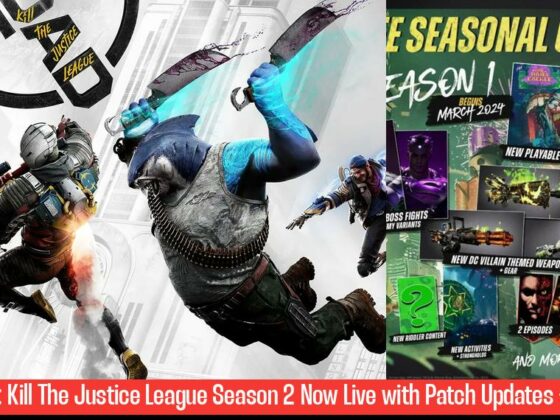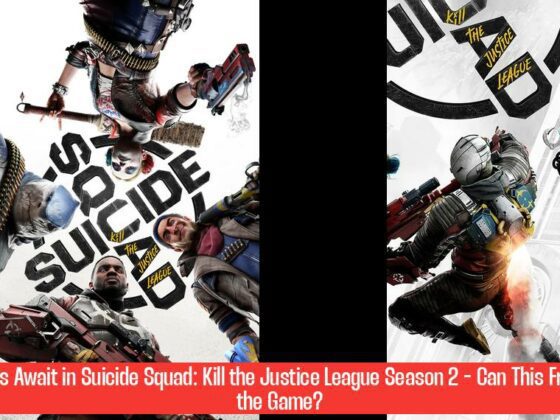Justice League: Crisis on Infinite Earths – Part Three Review: A Lackluster Conclusion to a Mediocre Series
The much-hyped “Justice League: Crisis on Infinite Earths” saga has finally come to a close with the release of “Part Three.” Sadly, the grand finale falls short of expectations, leaving fans with a sense of disappointment and a feeling that the potential of this epic crossover event was never fully realized. While the previous two parts had their share of flaws, “Part Three” ultimately proves to be the weakest link in the chain, offering a lackluster conclusion to a mediocre series.
One of the most glaring issues with “Part Three” is its sluggish pacing. The plot feels drawn out and lacks the urgency and excitement that a story of this magnitude should possess. The action sequences, while visually impressive, fail to deliver the same impact as those in previous films. The overall narrative feels disjointed and lacks a cohesive flow, making it difficult for viewers to fully invest in the story.
The performances in “Part Three” are also a mixed bag. While some actors deliver solid performances, others fall flat. Kevin Conroy’s appearance as Batman, a fan favorite, feels oddly out of place. His scene and lines appear to have been added in post-production, lacking the seamless integration that would have made his cameo more satisfying. Mark Hamill’s portrayal of the Joker, a role he has made his own, is disappointing. His voice sounds like a blend of artificial intelligence and a poor imitation of his iconic voice, lacking the depth and nuance that have made his previous performances so memorable.
The overall tone of “Part Three” is also underwhelming. The story lacks the emotional weight and gravitas that a story of this scale should possess. The stakes feel low, and the characters’ struggles lack the depth and complexity that would have made their journey more compelling. The climax of the film feels rushed and anticlimactic, leaving viewers feeling unsatisfied.
Despite its shortcomings, “Part Three” does have a few redeeming qualities. The animation is decent, and the visual effects are impressive, particularly during the large-scale battles. The inclusion of numerous DC characters, both familiar and obscure, adds a sense of scope and grandeur to the story. However, these positives cannot overcome the film’s fundamental flaws.
The Anti-Monitor’s Ambiguous Threat
The Anti-Monitor, the main villain of the “Crisis on Infinite Earths” storyline, is a powerful and menacing force. However, his motivations and goals remain ambiguous throughout the film. His ultimate plan is never fully explained, and his actions often seem arbitrary and illogical. The lack of clarity regarding the Anti-Monitor’s motives makes it difficult for viewers to fully understand the stakes involved in the battle against him. This ambiguity ultimately detracts from the film’s intensity and suspense.
The Anti-Monitor’s powers are vast and destructive, capable of wiping out entire universes with ease. However, his ability to manipulate time and reality is never fully explored or explained. This lack of clarity about the Anti-Monitor’s powers makes it difficult to believe the threat he poses to the heroes. The film could have benefited from a more detailed explanation of the Anti-Monitor’s abilities and how they work, providing viewers with a better understanding of the forces at play in the story.
In addition to his ambiguous motivations, the Anti-Monitor lacks the personality and charisma that would have made him a truly memorable villain. His dialogue is often stilted and predictable, and his presence never inspires fear or awe. The Anti-Monitor is a powerful force, but he lacks the depth and complexity that would have made him a truly compelling antagonist.
The Anti-Monitor’s lack of a compelling backstory or emotional depth also contributes to his overall weakness as a character. The film could have benefited from a deeper exploration of his past, his motivations for seeking to destroy the multiverse, and his relationship with the Monitor. Such a backstory would have added layers of complexity to the character, making him more relatable and compelling to the audience.
Despite its shortcomings, the Anti-Monitor is a visually impressive villain. His design, particularly his towering form and glowing eyes, is striking and memorable. However, his physical presence alone cannot compensate for the lack of depth and complexity in his character.
The Pacing Problem
One of the most significant criticisms of “Justice League: Crisis on Infinite Earths – Part Three” is its slow and uneven pacing. The film feels rushed in some parts, while dragging in others. This uneven pacing disrupts the flow of the narrative and makes it difficult for viewers to fully engage with the story.
The first half of the film is particularly slow-paced. The action sequences are drawn out and lack the intensity and excitement that would have made them more engaging. The dialogue is often clunky and exposition-heavy, slowing down the narrative and making it feel more like a series of talking heads than a thrilling adventure.
The latter half of the film picks up the pace somewhat, but the action sequences remain underwhelming. The climax of the film feels rushed and anticlimactic, leaving viewers with a sense of disappointment. The film could have benefited from a more balanced pacing, allowing for more time to develop the characters and their relationships, and to build suspense and tension before the final battle.
The pacing issues in “Part Three” highlight the challenges of cramming a complex and sprawling story into a limited runtime. The film would have benefited from a more extended format, allowing for more time to explore the characters and their motivations, and to develop the plot more fully.
The slow pacing also detracts from the film’s emotional impact. The loss of key characters, such as Supergirl, feels less impactful due to the lack of time spent developing their relationships with other characters. The film could have benefited from a more deliberate and emotionally resonant approach to these character deaths, allowing viewers to feel the full weight of their loss.
The Missed Opportunity of a Multiverse
The “Crisis on Infinite Earths” storyline, with its premise of a multiverse of parallel worlds, presented a unique opportunity for the film to explore a wide range of characters and concepts. However, the film fails to fully capitalize on this potential. The multiverse feels underdeveloped, lacking the depth and complexity that would have made it truly compelling.
Instead of exploring the unique characteristics and histories of different Earths, the film focuses primarily on the main Earth and its heroes. The other Earths feel like mere appendages to the main storyline, lacking the distinct identities and personalities that would have made them more memorable. The film could have benefited from a more detailed exploration of the different Earths, including their cultures, societies, and histories. Such an exploration would have added layers of complexity to the story and made the multiverse feel more real and engaging.
The film also misses an opportunity to explore the philosophical implications of a multiverse. The concept of infinite possibilities and alternate realities raises questions about the nature of existence, free will, and destiny. The film could have delved deeper into these philosophical themes, adding another layer of depth and meaning to the story.
The “Crisis on Infinite Earths” storyline is a rich and complex concept with endless possibilities for exploration. However, the film fails to fully realize its potential, leaving viewers with a sense of disappointment and a feeling that the story could have been so much more.
The Disappointing Conclusion
Ultimately, “Justice League: Crisis on Infinite Earths – Part Three” is a disappointing conclusion to a mediocre series. The film suffers from slow pacing, a lackluster plot, and underwhelming performances. The Anti-Monitor, as the main villain, lacks the depth and complexity that would have made him a truly memorable antagonist. The multiverse, with its promise of infinite possibilities, feels underdeveloped and uninspired.
While the film does have a few redeeming qualities, such as decent animation and impressive visual effects, these positives cannot overcome the film’s fundamental flaws. “Justice League: Crisis on Infinite Earths – Part Three” is a missed opportunity, a film that fails to live up to the legacy of its source material.
Despite its shortcomings, the film does offer a few moments of entertainment. The inclusion of numerous DC characters, both familiar and obscure, adds a sense of scope and grandeur to the story. The action sequences, while not as impactful as those in previous films, are still visually impressive. However, these positives cannot overcome the film’s fundamental flaws. “Justice League: Crisis on Infinite Earths – Part Three” is a disappointing conclusion to a mediocre series.
For fans of the “Crisis on Infinite Earths” storyline, “Part Three” is a frustrating experience. The film fails to live up to the expectations set by its predecessors, offering a lackluster conclusion to a story that had the potential to be truly epic. The film’s shortcomings are a testament to the challenges of adapting a complex and sprawling storyline to a limited format. “Justice League: Crisis on Infinite Earths – Part Three” is a missed opportunity, a film that fails to fully realize the potential of its source material.
What is the overall reception of “Justice League: Crisis on Infinite Earths – Part Three”?
The overall reception of “Part Three” is disappointing, with many viewers feeling let down by the lackluster conclusion to the series.
What are some of the main issues with “Part Three” of the Justice League series?
Some of the main issues include sluggish pacing, lack of urgency and excitement in the plot, disjointed narrative, and underwhelming performances.
Which aspects of “Part Three” received praise despite its flaws?
The animation quality, visual effects during battles, and the inclusion of various DC characters were praised despite the film’s shortcomings.
How did fans and viewers feel about Kevin Conroy’s appearance as Batman and Mark Hamill’s portrayal of the Joker in “Part Three”?
Fans felt Kevin Conroy’s appearance as Batman was out of place and Mark Hamill’s portrayal of the Joker was disappointing, lacking the depth and nuance of their previous performances.



